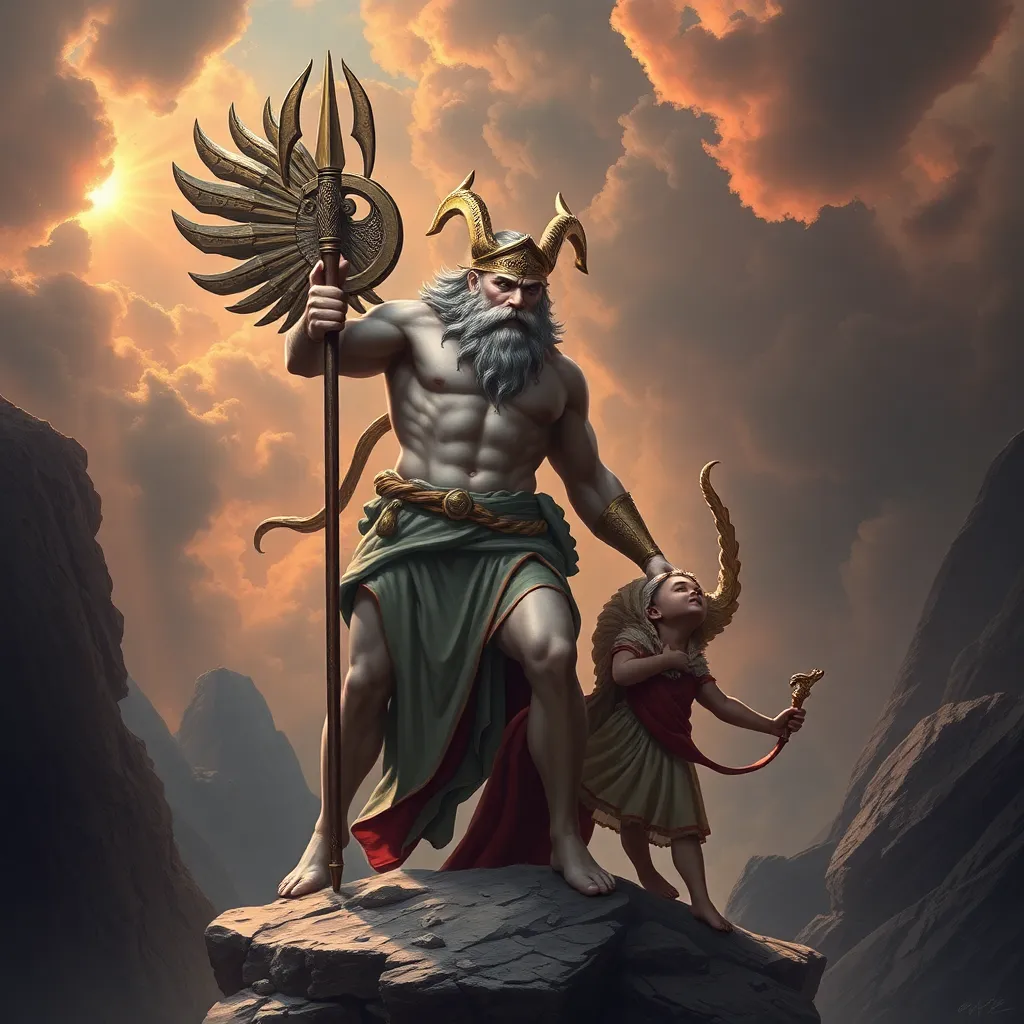Ares and His Offspring: The Impact of His Children in Mythology
I. Introduction
Ares, the Greek god of war, embodies the chaotic and violent aspects of battle. Unlike other Olympian deities, Ares is often depicted as a figure of strife and tumult rather than one of noble warfare or strategy. His offspring play significant roles in various myths, showcasing the complexities of war, fear, and harmony. This article aims to explore Ares’s children, their characteristics, and their impact on both Greek and Roman mythology, as well as contemporary culture.
II. Ares: The God of War
Ares was one of the twelve Olympian gods and represented the brutal and untamed aspects of warfare. He was often depicted as a strong, aggressive figure, clad in armor and accompanied by a retinue of creatures associated with battle, such as vultures and dogs. Ares was not well-liked among the other gods due to his violent nature and was often portrayed as impulsive and reckless.
Symbolism associated with Ares includes:
- War and Conflict
- Bravery and Valor
- Violence and Bloodshed
- Chaos and Disorder
Ares had complex relationships with other gods and goddesses. He was often in conflict with Athena, the goddess of wisdom and strategic warfare, highlighting the duality of warfare in Greek thought. His love affair with Aphrodite, the goddess of love, further illustrated the contrasts between war and love.
III. The Children of Ares
Ares fathered several notable children, each with distinct characteristics and roles in mythology. The major offspring of Ares include:
- Deimos
- Phobos
- Harmonia
- Anteros
- Eros
Each of these children embodies various aspects of war and human emotion, contributing to the complexities of Ares’s legacy.
IV. Deimos and Phobos: Personifications of Fear and Panic
Deimos, whose name translates to “Terror,” and Phobos, meaning “Fear,” were crucial figures in the context of battle. They were often depicted as accompanying their father into war, instilling fear and panic in the hearts of soldiers. These personifications were not merely abstract concepts; they played integral roles in various myths and narratives.
In Homeric literature, Deimos and Phobos are described as driving the chariots of Ares, spreading dread among enemies. Their appearances often symbolize the psychological aspects of warfare:
- Deimos brought terror and confusion, influencing soldiers’ morale.
- Phobos represented the instinctual fear that could paralyze warriors on the battlefield.
The impact of these personifications on the perception of war has been profound, as they highlight the importance of psychological warfare and the internal struggles faced by combatants.
V. Harmonia: The Goddess of Harmony
In stark contrast to her fiery father, Harmonia represents the concept of harmony and balance. She is often depicted as a beautiful goddess, embodying peace and reconciliation. Harmonia was born from the union of Ares and Aphrodite, symbolizing the duality of love and war.
Harmonia’s significance is particularly evident in the myth of Cadmus, the founder of Thebes. Following a series of trials, Cadmus marries Harmonia, and together they establish a lineage that signifies the blending of chaos (Ares) and order (Harmonia). Her narrative serves as a reminder of the potential for peace amidst the turmoil of conflict, embodying the hope for reconciliation and unity.
VI. The Legacy of Ares’s Offspring in Roman Mythology
In Roman mythology, Ares was known as Mars, a god who also represented the martial aspects of life. However, Mars was often viewed with greater respect and reverence than Ares, reflecting the Roman values of discipline and strategy in warfare.
The influence of Ares’s children extended into Roman culture, where they were integrated into various myths and stories, including:
- The incorporation of Phobos and Deimos into Roman military symbolism.
- The portrayal of Harmonia in the context of Rome’s founding myths.
- Adaptations of Eros (Cupid) as a significant figure in Roman literature and art.
These adaptations demonstrate how the legacy of Ares continued to resonate within Roman culture, shaping perceptions of war and relationships.
VII. Ares’s Offspring in Contemporary Culture
The influence of Ares’s offspring can be seen in modern literature, film, and media, where themes of war, fear, and harmony continue to resonate. Characters inspired by Deimos and Phobos frequently appear in narratives exploring the psychological dimensions of conflict.
Examples include:
- Film adaptations depicting the horrors of war and the internal struggles of soldiers.
- Literature that explores themes of love and conflict, such as in novels and poetry.
- Video games that incorporate mythological elements, featuring characters akin to Ares’s children.
These adaptations highlight the enduring relevance of Ares’s children, as they continue to resonate with audiences grappling with the complexities of human emotions in the context of war and peace.
VIII. Conclusion
The impact of Ares and his offspring in mythology is profound and multifaceted. Through characters like Deimos, Phobos, and Harmonia, we see the duality of war and peace, fear and love, chaos and harmony. The stories of Ares’s children not only reflect the values and beliefs of ancient Greek society but also continue to influence contemporary narratives.
As society grapples with its own conflicts and strives for understanding, the legacy of Ares serves as a poignant reminder of the complexities of human nature and the eternal struggle between war and peace.




